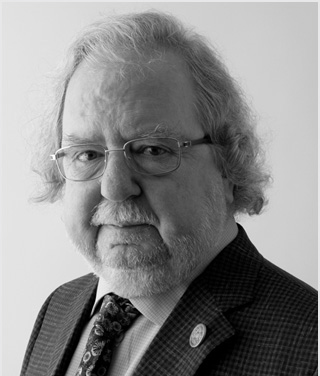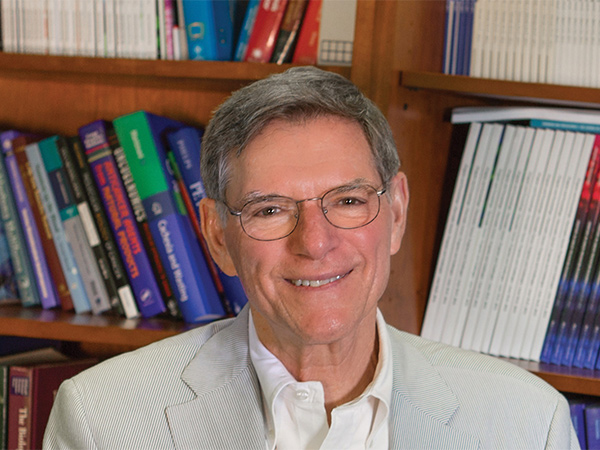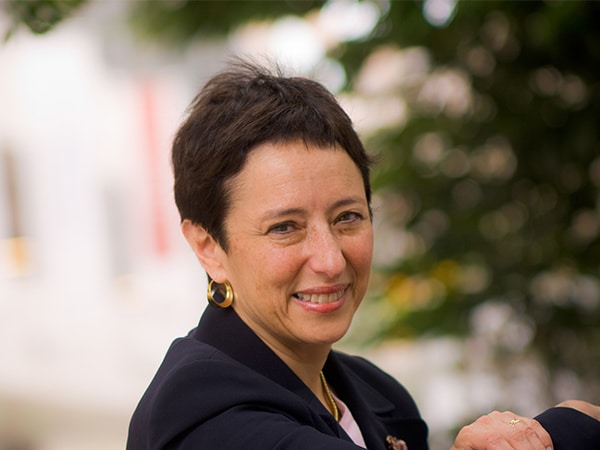Dr. James Allison: Why Don’t Our Bodies Fight Cancer for Us?
James P. Allison, PhD, Untangling the complexities of the immune system to pioneer cancer immunotherapy.
Even as a child growing up in South Texas, James P. Allison, PhD, thrived on discovering how things work.
“I just developed this love of figuring things out – building models, taking things apart trying to understand how they worked,” explains Dr. Allison, professor and chair of the Department of Immunology and director of the Immunology Platform at the University of Texas MD Anderson Cancer Center in Houston, a Fellow of the AACR Academy. “I decided that if I could be lucky enough to have a career of figuring things out, that is what I wanted to do.”
Dr. Allison’s childhood was marked by cancer. His mother died of the disease when he was just 10 years old. As an adolescent, two uncles died of cancer.
“Cancer is very personal to me,” he says. As an adult, he has lost a brother to metastatic prostate cancer, and Dr. Allison himself has survived prostate cancer.
Still, solving key riddles about how cancer evades the body’s immune system wasn’t his focus, despite the major impact the disease had on his life.
“I didn’t go into science to cure cancer,” he says. “I went into science to figure out how things work and then, having figured out how they work, learn how to do something good.”
Dr. Allison got his undergraduate degree in microbiology. In graduate school, he became interested in the immune system and discovering how T cells function. When he took his first faculty position, he focused on the immune system, working to discover how these elegant mechanisms of cells and molecules search your body for “things that have gone awry and manage to protect you and not destroy you,” he says.
“I was really curious about how that works, so I basically spent my whole career in immunology trying to understand what regulates T cells, what turns them on, what turns them off, the molecular mechanisms of how they work.”
Dr. Allison’s research led to the discovery of the T-cell antigen receptor in the early 1980s, “which is kind of like the ignition switch on a T cell,” he says.
He followed that by pioneering the research into CD28, a co-stimulatory molecule that he describes as the “gas pedal” of the immune response.
Then his attention turned to another molecule, closely related to CD28, called CTLA-4.
“The question was what does it do and it was very controversial,” he explains.

Some researchers suggested that CTLA-4 was another gas pedal, but Dr. Allison and his research team proposed that the molecule, in fact, functioned as a “brake,” signaling the immune system to stop the process of deploying millions of cells to fight off an infection or try to attack cancer cells.
Many in the field disagreed with his hypothesis that the molecule functioned as a brake on the immune system. But in fact, it was.
“Then I had the thought: ‘Well, I wonder if we could make the immune system better at attacking cancer by temporarily disabling the brakes? Just basically keep the immune system from turning itself off for an extended period of time until it had time to eliminate tumors,” he says.
His lab developed an antibody against CTLA-4 that inhibited tumor growth in mice. That research resulted in the development of the monoclonal antibody ipilimumab, the first drug able to improve survival rates for metastatic melanoma patients by unleashing the immune system so it could recognize and attack cancerous cells.
Dr. Allison calls the mechanism by which anti-CTLA-4 therapy works “immune checkpoint blockade,” and believes that by combining targeted therapies with checkpoint blockade inducers, one can turn cancer’s genomic instability, which it uses to build resistance to drugs, against it.
Meeting the patients who have benefited from his work has a profound impact on Dr. Allison.
He recalls that early on in the development of ipilimumab, a colleague asked him to meet a patient in the clinic who’d been receiving the treatment for metastatic melanoma.
“She had just been told she’d been free of cancer for a year after getting ipilimumab,” Dr. Allison recalls. “That was an incredible moment.”
Ipilimumab received FDA approval as a treatment for metastatic melanoma in 2011.
The result of decades of work to understand the molecular mechanisms and translate that research into a successful therapy highlights the importance of sustained funding of the entire continuum of cancer science.
In the coming years, Dr. Allison anticipates combinations of immunotherapy with precision cancer therapeutics, which have succeeded in halting the disease in large numbers of patients, but are too often short-lived as the cancer develops resistance and begins to grow again.
“What we need to do is put those two together and design individualized therapies,” Dr. Allison explains, adding that the future of cancer patient care will most likely feature curative combinations of approaches.
Dr. Allison is a longtime, prominent member of the AACR. He recently added the 2015 Lasker-DeBakey Clinical Medical Research Award for “the discovery and development of a monoclonal antibody therapy that unleashes the immune system to combat cancer” to a long list of honors.
Dr. Allison calls the AACR “the single most important organization in the area of cancer research,” both because it encompasses the entire field from the basic biology of cancer to current treatments and because of its Annual Meeting and single-topic meetings and workshops that bring together experts to discuss and collaborate on the science of cancer discovery. He emphasized that supporting cancer research is critically important to continue to advance new and more effective approaches to preventing and treating the many diseases we call cancer.
“I’m very concerned about the lack of federal funding for fundamental cancer science,” he says.




